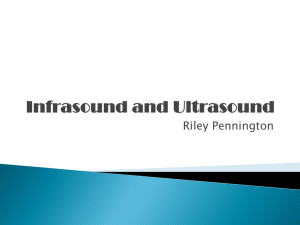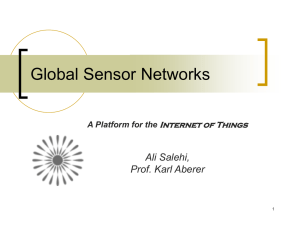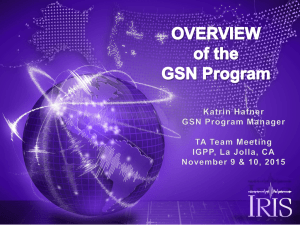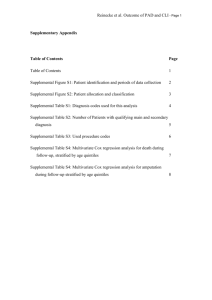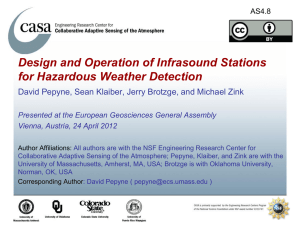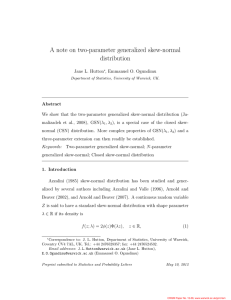PIF-GSN-2012-01(Infrasound)
advertisement
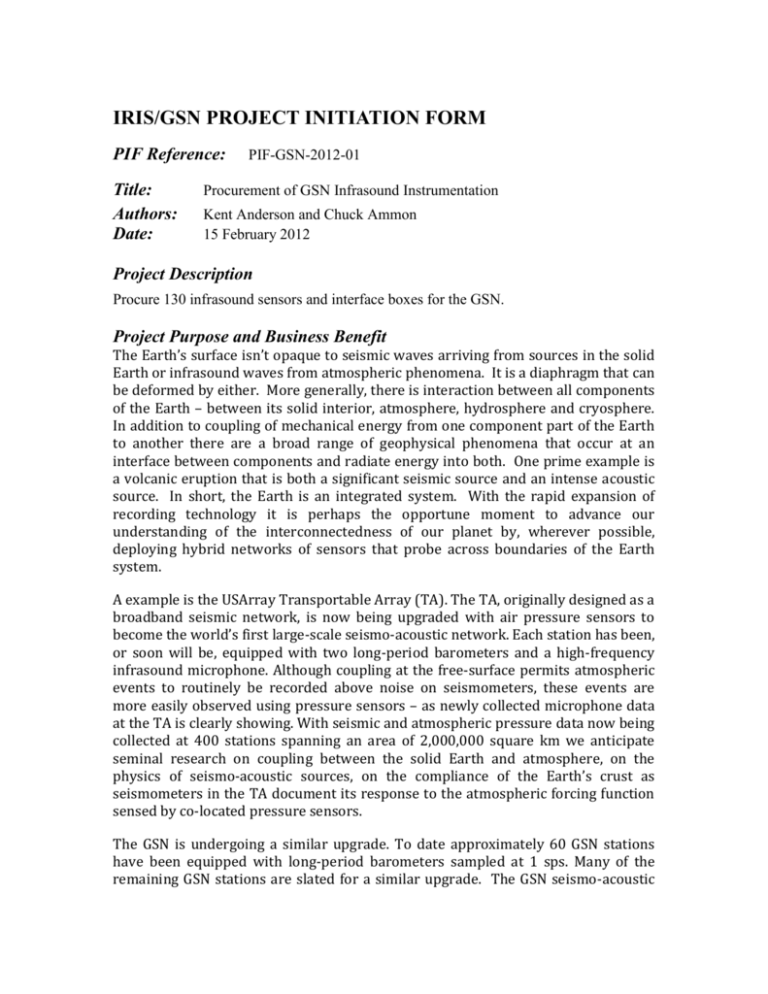
IRIS/GSN PROJECT INITIATION FORM PIF Reference: Title: Authors: Date: PIF-GSN-2012-01 Procurement of GSN Infrasound Instrumentation Kent Anderson and Chuck Ammon 15 February 2012 Project Description Procure 130 infrasound sensors and interface boxes for the GSN. Project Purpose and Business Benefit The Earth’s surface isn’t opaque to seismic waves arriving from sources in the solid Earth or infrasound waves from atmospheric phenomena. It is a diaphragm that can be deformed by either. More generally, there is interaction between all components of the Earth – between its solid interior, atmosphere, hydrosphere and cryosphere. In addition to coupling of mechanical energy from one component part of the Earth to another there are a broad range of geophysical phenomena that occur at an interface between components and radiate energy into both. One prime example is a volcanic eruption that is both a significant seismic source and an intense acoustic source. In short, the Earth is an integrated system. With the rapid expansion of recording technology it is perhaps the opportune moment to advance our understanding of the interconnectedness of our planet by, wherever possible, deploying hybrid networks of sensors that probe across boundaries of the Earth system. A example is the USArray Transportable Array (TA). The TA, originally designed as a broadband seismic network, is now being upgraded with air pressure sensors to become the world’s first large-scale seismo-acoustic network. Each station has been, or soon will be, equipped with two long-period barometers and a high-frequency infrasound microphone. Although coupling at the free-surface permits atmospheric events to routinely be recorded above noise on seismometers, these events are more easily observed using pressure sensors – as newly collected microphone data at the TA is clearly showing. With seismic and atmospheric pressure data now being collected at 400 stations spanning an area of 2,000,000 square km we anticipate seminal research on coupling between the solid Earth and atmosphere, on the physics of seismo-acoustic sources, on the compliance of the Earth’s crust as seismometers in the TA document its response to the atmospheric forcing function sensed by co-located pressure sensors. The GSN is undergoing a similar upgrade. To date approximately 60 GSN stations have been equipped with long-period barometers sampled at 1 sps. Many of the remaining GSN stations are slated for a similar upgrade. The GSN seismo-acoustic stations complement the International Monitoring System (IMS) infrasound network. Each station in the IMS network is an array of high-frequency barometers, sensitive to pressure variations at the upper range of the long-period instruments in the GSN and at higher frequencies. Although the IMS infrasound network is unprecedented, it is too sparse for detailed study of infrasound propagation in the atmosphere. Just as the TA has been upgraded with a suite of low- and highfrequency pressure sensors, we believe higher frequency microphones deployed at GSN stations would not only complement low-frequency barometers now available but would add significantly to the high-frequency acoustic coverage of the atmosphere provided by the IMS infrasound network. This additional coverage would permit significant advances in a number of areas including interferometric studies of the upper atmosphere and monitoring and study of hazardous volcanic eruptions and severe storms. Project Scale and Duration Procurement can be made throughout the 5 year cooperative agreement (2013-18) and installations can occur at maintenance/upgrade trips of opportunity. It is expected that the procurement can be complete by the end of 2018. Estimated Project Cost Sensor and interface box cost is ~$3,000 per station. 130 GSN stations would cost $390,000. This can be scaled to a subset of the GSN as funds allow.
